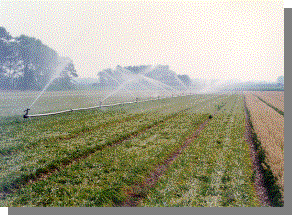
Conflict Resolution

WAS allows users in situations of conflict or competition for scarce water resources to examine the impact of various levels of ownership or allocation. Also WAS can be used to explore opportunities for cooperation. The tool is particularly useful in its application to dispute resolution by showing the joint gains from trade or reallocation of water resources among the competing parties. These gains may be realized by simple trade where one party values the resource higher than the other party. The power of WAS comes in finding opportunities for cooperation between competing parties that other approaches to water modeling are likely to miss. For example, it may be advantageous for competing parties to invest in joint infrastructure. Where there is competition between urban and agricultural water use, it may be advantageous to invest in recycling infrastructure: more fresh water can then be transferred to urban use, and in exchange, recycled water transferred to agricultural water use. Our decision support tool can identify not only where this kind of cooperation is beneficial, but when and to what capacity. The tool can also simulate drought conditions, and identify options for water allocation in times of short-run water scarcity.